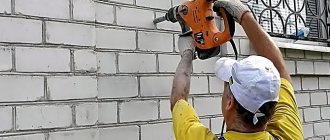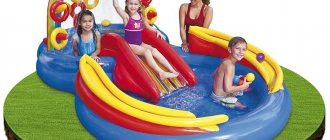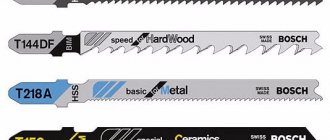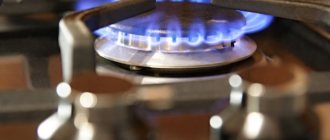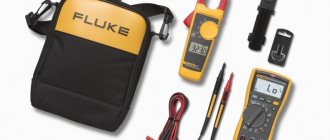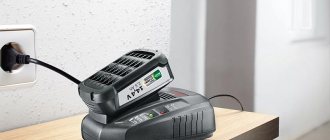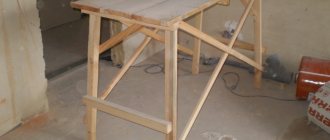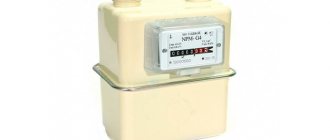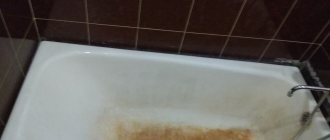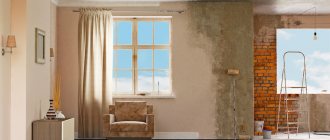From the author: hello, friends! Nowadays, carpentry can be not only a profession, a way of making a living, not only one of the men's jobs around the house or dacha, but also a hobby. Working with wood is a great opportunity to relieve tension and reduce stress. The monotonous process is calming, the smell of freshly cut chips can be inhaled with pleasure, and the beautiful result is pleasing to the eye.
In this article we will talk about how to choose a hand plane. Let's look at what types of equipment there are (and they are divided into two large groups: mechanical and electrical), what to look for when purchasing. We’ll also talk about how to avoid common mistakes when working with a plane. Let's start by getting to know this tool.
Design Features
To know how to choose a good hand plane, you should have an understanding of its design. Such instruments consist of the following main parts:
- Frame. This structural element is most often made of wood. It is in it that all the main components of the plane are attached.
- Knife. Sharpened at a certain angle.
- Clamp. Can be made from different materials. This can be a metal plate or bar.
- Chip breaker. Installed slightly higher than the knife. As you can already judge from the name of this element, it serves to break chips and guide them.
- Adjustment screw. This structural element is responsible for changing the position of the knife relative to the surface being processed.
All universal hand planes for wood have this design. The basic elements described above are also present in other, specialized varieties. On the body of any plane, among other things, there are two handles.
Figure planing
Figure planing on wood is an art. To create unique products with a profile section, it is necessary to use a special material - wood of the highest quality, which must have a minimum number of knots, and it itself must be straight-grained. At the same time, such high-quality material must be processed with a special-purpose tool. Such tools may include:
- Kalevka - this type of plane is used for shaped processing of objects. It has a multi-level sole and special edges on the knife. Perfect for making carved door/window trims, baguettes and cornices.
- Tongue and groove - used for making grooves, holes in boards and tongue and groove joints, as well as other tongue-and-groove joints. Consists of securing and guiding blocks held in place by screws.
- Primer – it is designed for cleaning grooves in the form of a trapezoid along the grain of the wood.
- Zenzubel - it is used for making grooves and quarters and then cleaning them. The knives of this device are shaped like blades, and the body is equipped with a special hole for discharging chips.
- Falzgebel - used for stripping and selecting quarters, has a stepped sole.
- Humpback - its plantar base has a convex shape, which is very convenient for working with cylindrical, semicircular or concave surfaces.
What to look for when choosing
The main element of the planer design is the knife. It is its quality that you should pay attention to first. This element must be made of high quality steel. In this case, the plane can be used for as long as possible without the need for sharpening. Of course, it is visually difficult to determine how well the material was chosen for the plane knife. Therefore, first of all, you should pay attention to the reputation of the manufacturer.
Of course, the cutting tool should never wobble. When purchasing, you should also check the front handle. It must also hold tight. In addition, when choosing a plane, you should pay attention to the size of the handle for the right hand. The length of this element varies. A tool with a small handle may simply not be suitable for a person with large hands.
Which electric planer to choose
1. To work with large surfaces (making tables, wardrobes, interior doors), you will need a wide electric planer with a blade of 110-170 mm and a power of 1.5 kW. In terms of removal depth, models with an indicator of 2-3 mm are sufficient. The number of revolutions is at least 14,000 per minute. A weight of 5-6 kg will be useful.
2. To make windows and frames, you need a tool with a sample width of 82 mm and a power of 1.2-1.6 kW. In this type of activity, the V-shaped grooves on the ski are very useful for removing beautiful decorative chamfers. A sampling depth of 3-4 mm is suitable. Idle speed 15000 rpm.
3. Those who work with hard trees (oak, cedar, ash) need an electric planer with a power of 2.2 kW, a rubber handle and the ability to change the cutting depth up to 3 mm. A high drum rotation speed of about 18,000-19,000 rpm will be required. It will be convenient to work with a device weighing 7-9 kg.
4. For a summer cottage and periodic work on setting up a fence or making a bench, a model with a power of 0.6 kW and the possibility of recessing up to 4 mm is sufficient. A light unit up to 3 kg and a speed of 12,000 per minute is suitable.
Varieties
Of course, you should choose a hand plane based on the specific purposes for which it will be intended. There are several types of planes on sale today. The most popular are:
- Universal. This is a regular plane that can be used to do most carpentry work.
- Jointer. The body of this instrument is longer than that of a conventional one. A jointer is used to process large workpieces.
- End plane. The knife of such a tool is located at a flatter angle. This allows high-quality processing of end grain fibers.
- Zenzubel. A plane of this type is used mainly for making various kinds of carpentry joints and folds.
Reviews of plane brands
Carpentry tools of this type are sold on the modern market from different manufacturers. Many brands are of very good quality. For example, planes from companies such as Bailey and Handyman have earned good reviews from craftsmen. Bailey tools are valued primarily for the excellent quality of their knives and long service life. Sharpening the knife of a hand plane of this brand is done quite rarely. Sometimes there are comments that mention the build quality is not very good. But even if any shortcomings are found in the purchased tool, they can usually be easily and quickly eliminated, and on your own. Handyman planes, judging by the reviews, are also convenient and reliable. Their only drawback is their not very neat design.
Experienced craftsmen do not advise purchasing Groz brand products (India). Despite the fact that the products of this brand are classified as expensive, judging by the reviews, they are not of particularly good quality. Their build quality is simply disgusting, and at the same time it is inconvenient to work with them.
How to use
Hand planes for wood are simple in design and quite easy to use. The main thing is to do the work smoothly, without jerking. This is especially true for very long workpieces. If this condition is met, the surface of the finished product will be very neat and smooth. When planing, you should stand to the side of the workpiece, with one foot forward.
The top and bottom surfaces of the products are very easy to process. It is somewhat more difficult to do work on the edges. In this case, it is important to secure the knife very firmly. Under no circumstances should it vibrate in the block. Edges should be planed exclusively in the direction of the grain.
There is also a technique that allows high-quality processing of very wide workpieces. In this case, the product is first planed diagonally, adhering to the direction of the fibers. Next, the plane is checked for evenness using a special ruler. At the final stage, finishing is carried out. In this case, a thin layer of chips is removed from the workpiece parallel to the edge.
Video description
Video review about choosing an electric planer:
Advantages:
- Affordable price.
- Lightweight and compact.
- Sampling quarters up to 9 mm deep.
- Drive overload protection.
The disadvantage is due to the insufficient length of the power cable.
- Hammer RNK600.
This electric plane was included in the rating as the best option for a home workshop. The tool is designed to work with already treated wood. However, it is capable of planing even hard wood.
Pros:
- Economical.
- The functionality includes quarter cutting and chamfering.
- Professional platform made of die-cast aluminum.
- Optimal cost.
- Soft start system and drive protection.
Cons - 1.5-meter power cord and small planing depth - 2 mm.
- Bison ZR-950-82.
The 0.95 kW-strong tool is powerful enough for home use and long-term work. Copes with wood of any species.
Positive properties:
- Compact with a weight of 3 kg.
- Overload protection.
- Possibility to make quarters up to 15 mm deep.
- Good equipment.
Negative qualities are associated with clogging of the discharge system with chips.
How to sharpen a knife
Of course, a hand plane, like any other tool, requires some care. No matter how good the steel the knife of this tool is made of, sooner or later it will still become dull and will have to be sharpened. Most often, this procedure is performed on a special stone called a touchstone. The latter is pre-wetted with water. When sharpening, it is advisable to moisten the knife itself. You should press it against the stone as tightly as possible.
The sharpening angle of a hand plane may vary depending on the model. Most often this figure is 30 degrees. When working on a whetstone, you usually just pay attention to how the blade was originally sharpened.
Sometimes experienced carpenters sharpen a plane knife on a wheel. In this case, it should be pressed not against the edge, but against the side surface. When using a wheel, you can also get a pretty high-quality sharpening. It will be very convenient to use a hand plane with such a knife. But only if you use an abrasive fine-grained abrasive wheel. After sharpening on such a tool, finishing is usually done. This procedure is performed either on a piece of sandpaper mounted on a table or on a block. Checking the quality of sharpening is quite easy. To do this, you just need to carefully examine the blade. If it does not shine, then the knife is sharp enough to be used.
The best manufacturers of electric planers - which company to choose
High-quality construction tools traditionally have German or Japanese roots.
If you are too lazy to delve into all the features of electric planers, you can purchase the company’s products from the list below:
- Makita;
- DeWalt;
- Skil;
- Bosch;
- Hitachi.
But each of the presented companies has such a wide variety of models in terms of characteristics and capabilities that it’s worth looking into the rating of the best electric planers.
The key features of the power tool and its purpose for different tasks are described below.
Recommendations: 15 best angle grinders (angle grinders)
16 best electric planers
18 Best Drilling Machines
How to set up a hand plane correctly
To perform this procedure you will need a special screwdriver. Such tools are designed specifically for setting planes. Their distinctive feature is their large width and short length. The main purpose of setting up a plane is to set the amount of blade protrusion above the surface of the sole. If the knife protrudes too far, the plane will begin to remove very thick chips. A slightly exposed blade will simply slide across the surface of the wood.
For initial processing of workpieces, the knife yield should be about 0.5 mm. If the plane is to be used for finishing, the blade should protrude slightly less over the sole.
Types of electric planers
Electric planers for home and garden
The main criterion for distinguishing electric planers is their power. Models with a parameter from 0.5 to 1 kW are considered household. Their potential is enough to perform small or one-time tasks that arise in a private home or country house.
When used every day all day long, they are ineffective in terms of performance or break down quickly.
Advantages:
- inexpensive;
- acceptable power up to 1 kW;
- fine depth adjustment;
- light weight;
- comfortable handles.
Flaws:
- All the necessary accessories for amateur versions are not on sale;
- It is more difficult to work with hard trees.
Professional electric planers
This group of products has a power from 1 to 2.2 kW. Such a reserve allows you to quickly cope with any tasks in a woodworking factory or in a private workshop.
Professional models are practical for making interior doors, tables, bedside tables, and window frames. They are convenient for processing solid wood (oak, ash). The tool can work all day long and last a long time.
Advantages:
- high power;
- use throughout the day;
- a large number of additional devices;
- high speed;
- depth adjustment up to 18 mm;
- very smooth surface after passing;
- wide area coverage.
Flaws:
- expensive;
- many models are much heavier than amateur ones.
How to store it correctly
Experienced craftsmen believe that a knife for a hand plane becomes dull, for the most part, not even during operation, but because of improper storage. After finishing planing the workpieces, this tool should be cleaned of chips and placed in a box specially designed for it. In this case, the position of the tool should be such that the knife blade protruding from the body is not at the bottom, but at the side.
If the hand plane is going to be stored for a very long time, it must be disassembled and thoroughly cleaned before putting it in the box. Knives and other metal parts should be wiped with an oiled rag.
Safety precautions
To protect yourself and others, be sure to read the instructions included with this tool.
Bosch PHO 3100 is a universal model in the middle price segment, cost for 2021 is 9100-9900 rubles. Power 750 W, planing depth up to 3.1 mm, weight 2.6 kg. Comments about this tool are mostly positive; owners like its convenience and reliability.
The rules for safe handling are easy to remember:
- Before starting work, it is necessary to inspect the insulation of the electrical wire, plug, socket, extension cord and ensure its integrity;
- When working in damp rooms, connect the plane to the network only through an RCD (residual current device). It will protect you from electric shock if it leaks;
- The use of safety glasses while working is mandatory;
- Before turning on the tool, you need to make sure that the start button is not locked in the pressed position;
- When changing knives or cleaning a tool from chips, it must be disconnected from the power supply;
- There should be no strangers, children or animals near you while working.

